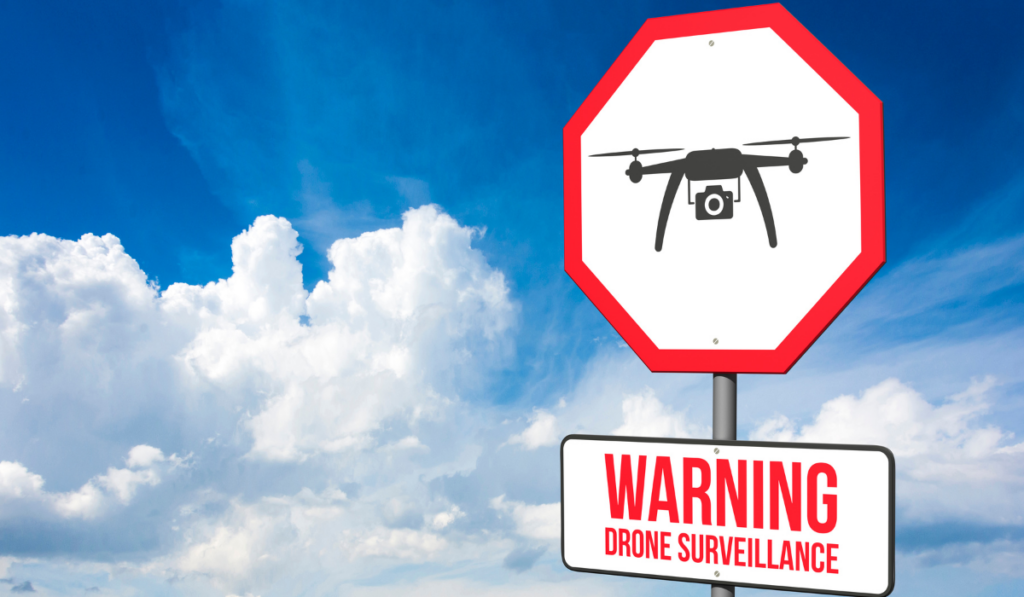Drone AI Technology: How It Works; Why It Matters
Over the last few decades, the development of Artificial Intelligence (AI) evolved at a rapid pace. Now, over the last few years, drone AI technology has taken a whole new turn.
But, what’s it all about?
Well, to reach their destination, drones use computer vision for processing, flying through the air and avoiding barriers along the way. For detecting objects, classifying, and processing them, computer vision plays a crucial role, as high-performance onboard image processing and drone neural networks are used in the process. (We’ll break these down in more detail below.)
But, with software now able to ‘learn’ and improve within split-seconds, drone flights are becoming easier and more accessible to pilots everywhere. And, while technology can never replace the skills and knowledge of a trained pilot, it’s certainly opening up new opportunities and use cases.
In the first half of this article, we’ll explore how AI works in general. Then, in the second half, we’ll explore how drone AI technology is powering a new generation of both platforms and uses.
Let’s dive in.
What is AI?
Essentially, AI strives to replicate human intelligence, simulating all its functions using computer systems. It also relies on what’s known as ‘machine learning’.
Machine learning is simply a sub-category of AI, acting as one pathway towards the ultimate goal. It uses software algorithms to automatically learn and recognize data patterns, then applies that learning towards making better, more reliable decisions.
Most of the time, AI and machine learning work in parallel, processing huge amounts of data. This data is later used to analyze patterns and make corrections, making further predictions about future states.
It’s an incredibly intricate process, all happening within a split second over and over again.
How Does Drone AI Technology Work?
There are several main features acting as the foundation of drone technology.
Drones often come pre-equipped with technology such as navigation systems, cameras, GPS, and programmable controllers for automated flights.
But, when it comes to drones, it’s often less about flight capabilities, and more about the payloads they carry. Whether hi-resolution cameras, thermal imaging sensors, LiDar sensors, or anything else, these payloads are really at the heart of any drone operation.
Without them, these flying machines are just that – flying machines. The sensors they carry, however, remain critical to capture the data you’re looking for.
Here’s where the aforementioned ‘computer vision’ comes into play.
Like machine learning, computer vision is just another subsection of AI drone technology. The key thing here, however, is that computer vision uses digital images, videos, and other visual data to extract meaningful information.
It relies on these visual inputs to make recommendations or take appropriate actions.
Computer vision in drones deciphers and analyzes the surrounding area.
As machine learning technology & other facets of AI has improved, the drone industry recorded drastic changes, as generating algorithms and annotating tools became more efficient.
With these, many drones can now automatically detect and choose the right directions for flying safely.
The Impact of AI on Drone Applications
As mentioned above, computer vision contributed to the development of machine learning in drone technology, which works through onboard image processing performed within a neutral network.
OK, but what is a neural network?
Another sub-set of AI as a whole, neural networks look at vast quantities of data and determine patterns not otherwise obvious to humans. Or, at the vary least, discover these patterns much faster than people ever could.
In drones, a neural network works to enable object detection, and implements algorithms to perform precise tracking, detection, and classification of objects.
This way, the chances of crashing or incorrectly tracking a particular object are drastically decreased.
To initiate the process, scientists must choose a specific area of machine learning algorithms, training the program to classify and recognize images correctly.
For instance, in security surveillance, drone AI technology makes aerial monitoring much easier.
Certain drones, properly equipped, can be set to patrol areas automatically. With the right AI drone technology, a UAV can automatically recognize an anomaly (like an intruder), and immediately alert human guards to the situation.
In another example of drone AI technology, Amazon is now incorporating drones that can track exact locations and leave the product right on the doorsteps of their customers.
These uses all rely on video annotation algorithms to track objects and make decisions, all without the need for human input.
Simply put, there are three main aspects that leads to successful AI drone technology:
- Access to big data (a large pool to draw information from)
- Highly sophisticated algorithms
- GPUs (computer processors) with high computing power
Areas of Focus for AI Drone Technology
Hopefully, now you have a better understanding of how AI works.
By processing large amounts of data, specialized software can recognize patterns. Once these patterns are recognized and determined, software then applies them to current situations, and make predictions about likely outcomes.
But what does it all mean for you?
In order to understand the role of machine learning in AI drone technology, let’s take a look at some specific use cases.
Security Surveillance Improved by Drone AI Technology
Drone surveillance is used to capture images and videos for gathering information about targets. Automated surveillance is becoming increasingly widespread among researchers and companies, allowing them to better interpret video footage.
A great example of this AI drone technology is under development by UK scientists.
In their program, drones are programmed to help identify violent behavior in crowds, using computer vision. The algorithm is trained to transmit video footage via the internet and match certain aggressive postures.
Violent acts like kicking, stabbing, or punching, can be spotted and relayed to police on the ground.
Although the program remains far from perfect, it can achieve up to a 94% accuracy in ideal situations.
Weather Forecasting
Ever make big outdoor plans for your weekend, only to have them spoiled by a sudden rain or snowfall? Who hasn’t, right?
While there’s no way to guarantee forecasts 100% of the time, drone AI technology continues to push the accuracy of predictions higher. So, how do they do it?
Well, there are several techniques drones utilize for gathering the data needed for more accurate weather forecasts.
First, special sensors can be affixed onto drones to detect humidity, temperature, and air pressure of the location.
Alternatively, drones aid weather forecasting by dropping devices known as ‘dropsondes’. Dropsondes are scientific devices attached to a parachute and dropped from high altitudes. As they fall, they collect data such as wind speed/direction, humidity, temperature, etc.
Only last year, the National Oceanic and Atmospheric Administration (NOAA) began using drones to drop dropsondes into a hurricane.
After all, why risk human lives when you can send a drone to take the risks for you?
The last method to collect data is through image and video processing. For instance, there is a newly developed US study focusing on how land surfaces influence weather. Incorporating the data-capturing power of drones, AI drone technology recognizes patterns and draw conclusions for more accurate climate models.
Drone Delivery Services Rely on AI
Nowadays, there’s a huge increase in delivery services focusing on the use of drones.
During the COVID-19 pandemic, drones were also used to deliver blood donations, vaccinations, and critical supplies.
This type of medical delivery is becoming more popular. Over 30 companies currently deliver medical supplies using drones. Additionally, Matternet, a drone logistics company, recently launched a new station to allow its customers to seamlessly integrate drone operations into their supply chains.
The company’s M2 Drone and Cloud Platform will allow its customers to create and manage their own urban drone networks.
Drone AI Technology Powers Military Defense Forces
The military is one of the biggest sectors highlighting the use of drone AI technology.
Through AI drone technology, UAVs are being used as spy devices for scanning locations, targeting specific areas, and destroying enemy forces.
While these UAVs can often be controlled manually, most of these systems rely on technology. AI military drones need high computer vision-based navigation; otherwise, their tracking systems won’t work properly.
The Key Takeaways
There’s a major difference between programming a drone for flight requirements and programming a drone to perform assigned tasks.
When building a drone, there must be precise measurements in terms of interfacing sensors and actuators with a processor, which help make the drone fly.
On the other hand, if a new application is developed, then all that’s needed is a suitable drone and a computer algorithm that can be integrated into it.
Already, drones collect valuable data for a host of critical applications, such as weather forecasting and surveillance. They can also be used for search and rescue missions.
In the future, advancements in AI drone technology will only serve to further the number of use-cases available.
Which tasks do you think drones will be capable of next?
— — —
So, which drone is right for you? And, how do you get started? Do you hire out or bring your drone program in-house?
At Consortiq, we help you find a better way with drones, from consultation and program implementation to actually doing the work for you.
Ready to learn more? Just complete the form below to schedule a risk-free consultation!
Are you ready to find a better way?

Melanie Johnson - Contributing Author
Melanie Johnson, AI and computer vision enthusiast with a wealth of experience in technical writing. Passionate about innovation and AI-powered solutions. Loves sharing expert insights and educating individuals on tech.


